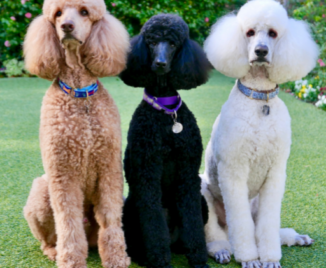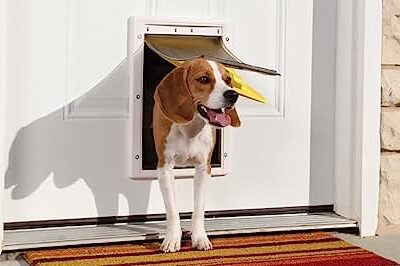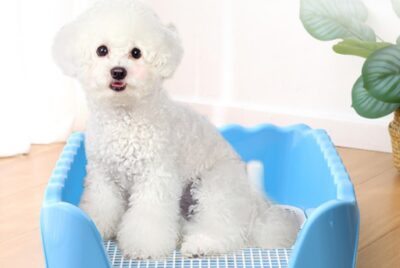Indoor Dog Kennels – Providing a Cozy and Secure Haven
Indoor Dog Kennels: Providing a Cozy and Secure Haven for Your Canine Companion
Introduction
As a passionate dog lover and enthusiast, I understand the importance of providing our furry friends with a safe and comfortable space of their own. That’s where indoor dog kennels come into play. These specialized enclosures offer numerous benefits for both dogs and their owners. In this article, I’ll dive into the world of indoor dog kennels, discussing their advantages, how to choose the right one, setting it up, and tips for effective usage.
What are Indoor Dog Kennels?
Indoor dog kennels, also known as crates or cages, are secure enclosures designed specifically for dogs. They are typically made of sturdy materials such as wire, plastic, or metal, offering a safe and confined space for your canine companion. Indoor dog kennels come in various sizes, allowing you to choose the most suitable option for your dog’s breed and size.
Benefits of Indoor Dog Kennels
Provides a Safe and Secure Environment
One of the primary benefits of indoor dog kennels is the security they provide. Dogs are den animals by nature, and having a designated space where they can feel safe and protected mimics their natural instincts. The enclosed structure of the kennel offers a sense of security, especially when you’re not able to supervise your furry friend closely.
Reduces Destructive Behavior
Indoor dog kennels can be incredibly useful in curbing destructive behavior. When left unsupervised, dogs may chew on furniture, shoes, or other valuable items in the house. By confining them to a kennel, you create a controlled environment that prevents them from accessing objects they shouldn’t. This not only protects your belongings but also ensures the safety of your dog.
Helps with Potty Training
Potty training is an essential aspect of owning a dog, and indoor dog kennels can play a significant role in this process. Dogs naturally avoid soiling their sleeping area, and a properly sized kennel can help enforce this instinct. By confining your dog in the kennel when you’re unable to watch them closely, you teach them to hold their bladder and bowels until they are taken outside for elimination.
Offers a Cozy Retreat
Indoor dog kennels also serve as cozy retreats for your furry friend. Dogs often seek out a comfortable and secure spot where they can relax and recharge. By providing a well-equipped kennel with soft bedding, you create a cozy haven that your dog will come to associate with comfort and relaxation.
Promotes Better Sleep
Just like humans, dogs need quality sleep for their overall well-being. Indoor dog kennels provide a quiet and comfortable space where your dog can enjoy uninterrupted sleep. The enclosed structure helps block out distractions and noise, promoting a deeper and more restful sleep for your four-legged companion.
How to Choose the Right Indoor Dog Kennel
When it comes to selecting the right indoor dog kennel, several factors should be considered to ensure your dog’s comfort and safety.
Size and Space Requirements
The size of the kennel is crucial. It should be large enough for your dog to stand, turn around, and stretch comfortably. At the same time, it shouldn’t be excessively spacious, as a cozy and snug environment is more desirable for dogs. Consider your dog’s size, breed, and growth potential when choosing the appropriate dimensions for the kennel.
Material and Durability
The material and durability of the indoor dog kennel are important considerations. Opt for a kennel made of high-quality materials that can withstand your dog’s activity level. Wire kennels are popular for their visibility and ventilation, while plastic or metal ones may offer better insulation and security.
Easy Cleaning and Maintenance
Choose a kennel that is easy to clean and maintain. Accidents happen, and you’ll want a kennel that can be quickly wiped down or washed to keep it hygienic. Removable trays or bottoms can simplify the cleaning process and prevent odors from building up.
Accessibility and Convenience
Consider the accessibility and convenience features of the kennel. Look for models with secure latches or locks to prevent accidental escapes. Some kennels may have doors on multiple sides, allowing for flexible placement options. Additionally, collapsible or foldable kennels can be advantageous for storage or travel purposes.
Where to buy your Indoor Dog Kennel
Here are 2 useful sites that will give you lots of choice:
Please note that the availability of specific products may vary, and it’s always recommended to compare prices, read customer reviews, and choose the best option based on your dog’s needs and preferences.
Setting Up an Indoor Dog Kennel
Once you’ve chosen the right indoor dog kennel, it’s time to set it up in a way that makes your furry friend feel comfortable and happy.
Selecting the Right Location
Choose a suitable location for the indoor dog kennel within your home. Find an area that is quiet and free from excessive foot traffic or loud noises. Dogs appreciate a peaceful environment where they can relax and feel secure. Avoid placing the kennel near drafty windows or in direct sunlight to ensure your dog’s comfort.
Adding Comfortable Bedding
To make the kennel cozy and inviting, add comfortable bedding for your dog to rest on. Use blankets, dog beds, or cushions that provide adequate support and insulation. Make sure the bedding is washable, as accidents or spills can occur.
Including Interactive Toys and Puzzles
To keep your dog mentally stimulated while in the kennel, provide interactive toys and puzzles. These toys can keep them engaged and prevent boredom or anxiety. Kong toys, treat-dispensing puzzles, or chew toys can be excellent options to entertain your furry friend.
Creating a Positive Association
Introduce the kennel to your dog in a positive and gradual manner. Associate the kennel with positive experiences by placing treats, toys, or meals inside. Encourage your dog to enter the kennel willingly and reward them with praise or treats. This helps create a positive association with the kennel and reduces any initial resistance or anxiety.
Introducing Your Dog to the Indoor Kennel
Introducing your dog to the indoor kennel should be a gradual and positive process to ensure their comfort and acceptance.
Gradual Introduction
Start by introducing the kennel in short sessions. Encourage your dog to enter the kennel using treats or toys, and allow them to explore it at their own pace. Gradually increase the duration of time spent in the kennel, always making sure to reward positive behavior. This gradual introduction helps your dog acclimate to the kennel and prevents them from associating it with negative experiences.
Positive Reinforcement
Use positive reinforcement techniques such as praise, treats, or verbal cues to reward your dog for going into the kennel willingly. Positive reinforcement strengthens the desired behavior and helps create a positive bond between your dog and the kennel.
Patience and Consistency
Patience and consistency are key when introducing your dog to the indoor kennel. Every dog is different, and some may take longer to adapt than others. Be patient with your furry friend and provide them with reassurance and support throughout the process. Consistency in your approach and expectations will help your dog understand what is expected of them when inside the kennel.
Tips for Using Indoor Dog Kennels Effectively
To make the most of your indoor dog kennel and ensure your dog’s well-being, consider the following tips:
Establish a Routine
Establishing a routine is beneficial for dogs and helps them feel secure. Incorporate regular kennel time into your daily schedule, such as during mealtime, naptime, or bedtime. Consistency in routine creates a sense of predictability and reduces anxiety in your dog.
Use the Kennel as a Training Tool
Indoor dog kennels can be valuable training tools. Use the kennel for obedience training, crate training, or to teach your dog specific commands. By associating the kennel with positive experiences and rewards, your dog will view it as a training aid rather than a form of punishment.
Provide Mental Stimulation
In addition to physical exercise, mental stimulation is crucial for your dog’s overall well-being. Fill interactive toys with treats or use puzzle toys to keep your dog mentally engaged while in the kennel. Mental stimulation helps alleviate boredom and reduces the likelihood of destructive behaviors.
Regular Exercise and Playtime
While the indoor dog kennel provides a secure space for your dog, it’s essential to remember that dogs also need regular exercise and playtime outside the kennel. Engage in daily walks, play fetch, or provide other forms of physical activity to keep your dog healthy and happy.
Avoid Using the Kennel for Punishment
To maintain a positive association with the indoor dog kennel, it’s crucial to avoid using it as a form of punishment. The kennel should be a safe haven for your dog, and using it for punishment can create fear or anxiety. Always provide positive reinforcement and rewards when your dog enters the kennel willingly.
Conclusion
Indoor dog kennels offer numerous benefits for both dogs and their owners. From providing a safe and secure environment to aiding in potty training and reducing destructive behaviors, these specialized enclosures play a vital role in the well-being of our canine companions. By choosing the right kennel, setting it up thoughtfully, and using it effectively, you can create a cozy and secure haven that your dog will love.
FAQs
Q. Can I leave my dog in an indoor dog kennel for extended periods?
A. While indoor dog kennels provide a safe space, it’s essential to balance confinement with exercise and socialization. Avoid leaving your dog in the kennel for excessively long periods. Dogs need mental stimulation and human interaction to thrive.
Q. How do I make my dog comfortable in the kennel when I’m away?
A. Make the kennel inviting by adding comfortable bedding, interactive toys, and leaving familiar scents, such as an item of your clothing. Also, provide access to fresh water and ensure the temperature is comfortable.
Q. Should I lock the kennel door when my dog is inside?
A. It’s generally safe to lock the kennel door when your dog is inside, especially if you’re leaving the house or unable to supervise. However, ensure that your dog has access to water and enough space to move comfortably.
Q. Can indoor dog kennels be used for travel purposes?
A. Yes, many indoor dog kennels are designed for travel. Look for portable and lightweight options that are easy to set up and secure in a vehicle. Always prioritize your dog’s comfort and safety during travel.
Q. Can I use an indoor dog kennel for multiple dogs?
A. Indoor dog kennels can be used for multiple dogs, but it’s crucial to consider their size and compatibility. Ensure that each dog has enough space and that they get along well. Separate kennels may be necessary if there are conflicts or resource guarding issues.




